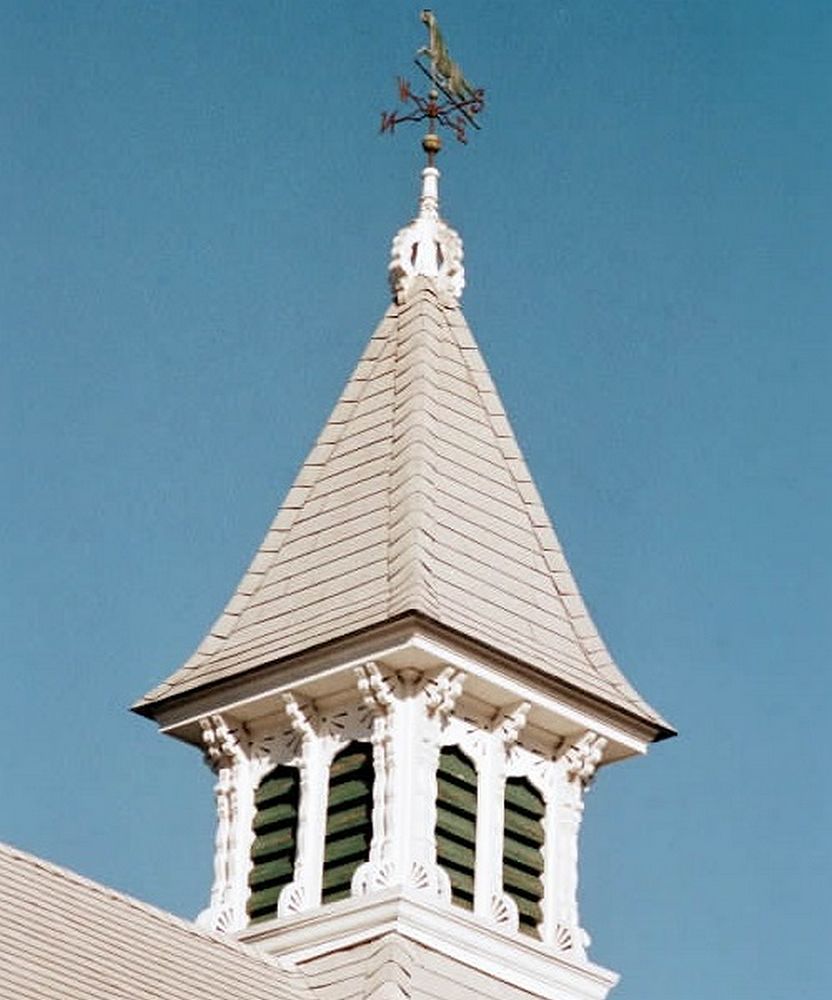PROGRESSIVE EPOXY POLYMERS, INC.
Nothing but Quality Products at Good Prices, Great Customer Service, and Lots and Lots of Helpful Information
and NO SALES TAX - You are shopping in TAX FREE New Hampshire
CALL 603-435-7199 (or email).We are the only technology based coating/epoxy/resin company that actively encourages your phone calls, not just during our East Coast work hours but also after/before hours, evening, weekends and even holidays. We're available when you are. We form a personal relationship with our customers and freely share technical information, how to-advice, product information and tips-and-tricks. Speak with a non-salesman technical professional with over 25 years of experience in the resin/coating/epoxy industry (no newbie staffer on the phone lines!). Floors, tables, boats, leaks, rot repair. We handle it all! We are an 'always available,' one-on-one, technical/scientific, coating company (watch our video). We are NOT one of those fluffy/slick mass sales firms the dominate the internet selling cheap third party (made in China???), low end epoxies and coatings with no real knowledge of what they are selling and quotas to sell to as many people as possible. 603-435-7199 (east coast time).
PRIMARY STORE LINK --- TOP SELLING PRODUCTS --- EPOXY GURU HELP SITE --- EPOXY DATA SHEETS
EPOXY PAINT COATINGS WASTE WATER MANHOLE REHAB
Sewer, Manhole, and Waste Water Epoxy Resin Systems
ABSOLUTE BEST SOURCE for epoxy information, options, USA made products, 24/7/365 help, and support
(EMAIL 603 435 7199)
Repair, coating rehab of manhole and sewer systems with Commercial Epoxy Products
Sewer, Manhole
Rehab - Epoxy Resin Paint Coating Systems
Repair, coating rehab of manhole and sewer systems with Commercial Epoxy
Products
BELOW GRADE WALL CRACKS
Your Host and Tour Guide:
Paul Oman, MS, MBA - Progressive Epoxy Polymers, Inc. (floor epoxies, marine epoxies, underwater epoxies, repair epoxies)
Member: NACE (National Assoc. of Corrosion Engineers), SSPC (Soc. of Protective Coatings)
"Professionals helping Professionals"
PROGRESSIVE EPOXY POLYMERS, INC.

|
PAGE AND SITE NAVIGATION |
|||||||||||||||||
No Sales Tax applied. Save Money, you're shopping in Tax Free New Hampshire
MEMBER: Internet Epoxy Confederation (IEC - CLICK HERE TO VISIT) -- "Where Professionalism Still Matters"
We've been selling epoxy - marine epoxy (boat building - wood / fiberglass repair) industrial coatings - garage paint - underwater epoxies - thick putties - tabletop resins and supplies since the early 1990's |
|
Sewer and waste water professionals have increasingly turned to our epoxies for the repair and coating of new and existing manholes, lift stations, concrete holding and mixing tanks, etc. We are now in the engineering specifications for manhole and lift station repair for a major Texas city. While almost every project is unique, the general specifications call for a two-coat system of epoxy in contrasting colors with one coat being a Kevlar®(tm) reinforced epoxy product. The two coats of epoxy in contrasting colors helps insure no thin areas or pinhole voids are present and that a 30 plus mil (.8 +mm) thick total coating is present. Other engineers or city officials may opt for a single 16- 40 mil (.4-1 mm) epoxy coating. The Kevlar® reinforce epoxy coating provided as extra durable, wear resistant layer of protection. The Kelvar also reinforced the coating, protecting it from impact damage and retarding the propagation of any cracking that might develop within the coating over time. These Kevlar® reinforced coatings come in several viscosities with application method (and/or thickness) requirements generally determining which Kevlar® epoxy to use. Our coatings have been selected for use in the waste water industry for the following reasons: - solvent-free and essentially odorless formulation provides for worker safety and the ability to seal leaks and cracks (because wet coating thickness equals dry coating thickness). - proven ability to adhere to damp or wet surfaces (can actually be applied underwater) and to be submerged immediately. - application is easy and can be applied by any contractor or maintenance person. - good chemical resistance. - field friendly mix ratios. Mixing ratio can be off slightly with no problem. - convenient 2-gal kits. - proven track record in both waste water and nuclear industries. - a complete line of epoxies for repair and coating of all concrete (and steel) surfaces. Surface PreparationWaterjet blast the concrete surfaces. Ensure all loose material is removed then neutralize to exposed surface if possible. Rinse the surface and allow to dry or blow off excess water using clean compressed air. However, these coatings can be applied underwater if necessary.
Epoxy Issues In Manhole Rehabilitation Projects
IntroductionManhole rehabilitation and waste water coatings is a fascinating niche in the coatings
and linings industry. Perhaps because municipal decision makers in that industry must wear so many hats; engineer,
administrator, coatings expert, contract negotiator, they tend to be more influenced by the coating manufacturers
than other coating decision makers. In one respect this is good. Quality products are brought to their attention.
However, the down side is that these manufacturers shield their municipal contacts from competitors and downplay
the weaknesses of their products. Coating ThicknessPerhaps the biggest dis-service the resin manufacturers have done is to place a major
emphasis on coating thickness. Not surprisingly, their recommendations of mil thickness (1000 mils = 1 inch) tend
to follow their product line specifications and thus exclude their competitors from consideration. The general
perception is that thicker is better. It certainly is for the resin manufacturers. A solvent-free epoxy with both
a wet and dry thickness of 16 mils will yield 100 feet of coverage, while the same coating applied at 160 mils
will cover only 10 square feet. That is the difference between a 1000 gallon order and a 100 gallon order. Of course
no municipality would be willing to pay 10 times as much for the 160 mil coating. They expect similar cost per
square foot pricing. That means in order to make the 10 square foot per gallon epoxy price competitive with the
100 square foot per gallon epoxy, it has to be 10 times cheaper per gallon. They only way to cut the price of epoxy
is to use inferior resins and/or lots of fillers and extenders. The bottom line is that the epoxies with the thinner
coverage may well be the better product.
We really appreciate you visiting PROGRESSIVE EPOXY POLYMERS, INC. and our web site: EPOXYPRODUCTS.COM. Take advantage of the CONTACT links on this page to ask questions about our products and/or your projects. You can stay in touch with us via our NEWSLETTER (link on our contact page) which is emailed every 6-8 weeks.
This current page is all about: EPOXY PAINT COATINGS WASTE WATER MANHOLE REHAB
Sewer, Manhole Rehab - Epoxy Resin
Paint Coating Systems
Coat Application IssuesIt only makes sense that all parties want an experienced and knowledgeable applicator
applying the coatings. Yet the requirements to become a ‘certified' applicator is a real issue with contractors
and one that many manufacturers would rather keep hidden from the municipal decision makers. There is more money
to be made in application than in the sale of the epoxy and too many resin manufacturers see no problem with double
dipping, profiting from both the sale of the product and the ‘certification' of the contractor or bidding contractors.
Municipal decision makers need to find out if the manufacturers require contractors to be certified to even bid
a job with their product. More importantly, they need to learn what cost, if any, is charged to contractors for
training and certification. A $10,000 fee is not unheard of in the industry and that alone could eliminate many
local and minority contractors from bidding or accepting jobs that legally they should have equal access to. Substrate ConditionToo often manufacturers promote a single solution to manhole rehabilitation without regard for the condition of the substrate. Thinner coatings are more likely to penetrate into the substrate than thicker (and thus drier) coatings. Not only will dry, thick coatings have more trouble sticking to dry, porous substrates, their shear mass (especially if it contains quartz or sand) will tend to stress the surface bond as well. Epoxy technology offers two solutions: 1) use a thinner penetrating epoxy to fortify a weakened substrate and provide a slick, non-porous surface for the thicker and drier topcoat to bond with, and; 2) use a thin penetrating epoxy that remains tacky for a long period of time and serves as both a mechanical and chemical bonding surface for the epoxy topcoat. Odors and MoistureMany manhole epoxies are now solvent-free (0% VOC) and have almost no odor or fumes to
endanger or annoy workers. While odor may not be much of a problem, moisture certainly remains a curse to most
epoxy manufacturers. Let's face it, most manholes are either wet, damp, moisture saturated, highly humid, or wet
from dew, rain, or waterjet surface preparation. Nothing ruins the coating properties and test results faster than
moisture. Add a trace of moisture in the long buried manhole and adhesion numbers can go from awesome to deplorable
in one brush stroke. Grouts, Patching, and LinersI am surprised how often cement-based grouts and patches are recommended when light weight,
moisture tolerant epoxy patching and filler products are alternative solutions. Cement-based grouts tend to bond
poorly to existing cements, are heavy, and tend to suffer the same problems experienced by the original damaged
substrate. In this area, price or tradition, rather than technology, tends to guide the thinking of the decision
makers. Reinforced EpoxiesSome epoxies contain fibers of Kevlar (tm), fiberglass strands, or other materials as
an internal reinforcement. These fibers tend to act like rebar in concrete or ‘rip-stop' nylon. They help resist
cracking, crack growth, and chipping. These reinforced epoxies should not be confused with ‘flake' or ‘mica' additives
which are sometimes added to low quality epoxies that have a permeability problem. These plates or flakes are intended
to reduce permeability within the epoxy. A better epoxy is a wiser choice. New Non-Epoxy Concrete PrimersWhat is new in the concrete coating industry is a group of products best described as water-based, zero thickness concrete sealers and fortifiers. Rather inexpensive, these single component products are rolled or sprayed upon exposed concrete where, like water, they quickly soak into the concrete. There they form tiny crystals inside the pore spaces along the surface of the concrete. This reduces both porosity and permeability, essentially fortifying the concrete and making it waterproof. Pinholing may also be reduced as there is likely to be less air filled voids in the surface after treatment. Because they soak into the concrete these products leave nothing on the surface to aid or detract from subsequent epoxy coatings. Their primary purpose is to aid in the waterproofing of the concrete and to aid in protecting it from hydrogen sulfide and other contaminants that literally invade the concrete surface and destroy it from within should the epoxy protective coating become breached or damaged. At a material cost of only a few cents per square foot, cities and pre-cast concrete manufactures are moving toward these kinds of ‘internal sealers' as a pre-coat and insurance against the worst of nature. ConclusionsThere are many different products and approaches to manhole rehabilitation and much or
most of the information available is biased toward one or another product or system. Issues like minimum coating
thickness necessary, shipping restrictions, applicator certification costs, and the epoxy's moisture tolerance
are often overlooked in the evaluation of different solutions.
Waste water epoxies: Corro Coat FC 2100 (Kevlar (tm) reinforced underwater epoxy This product is a Progressive Epoxy Polymers, Inc. best selling, favorite product. Visit our FAVORITES - 7 EPOXIES THAT WILL FIX ANYTHING web page at: epoxyproducts.com/favorites4u.html View other popular one-of-a-kind products. cycloaliphatic, non-hazmat, epoxies available from Progressive Epoxy Polymers
Case 1: sheet pile repair CLICK HERE Case 2: power plant (Nuclear DBA testing) CLICK HERECase 3: interior plant wall coating CLICK HERECase 4: Tyson Foods eviscerating wall coating CLICK HERECase 5: 200,000 gallon water tank CLICK HERECase 6: 40,000 gallon elevated potable water tank CLICK HERECase 7: 60,000 gallon potable water clear well CLICK HERECase 8: manhole coating project CLICK HERECase 9: lift station wet well CLICK HERECase 10: wastewater tank interior CLICK HERECase 11: concrete sewage main CLICK HERECase 12: waste treatment facility CLICK HERE#
|
|
FIND THIS/THESE PRODUCT(S) IN ONLINE CATALOG PAGE AND ONLINE STORE FRONT |
Epoxy Only Web Google Search
#1) Google
Everything Epoxy Searches
#2) Google
Marine Epoxies Searches
#3)Google
Floor Epoxy Searches View
our Progressive Epoxy Products, Inc.


 |
 |
 |
||
|
site master |
protagonist |
ground zero |